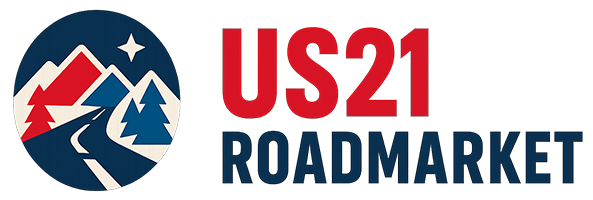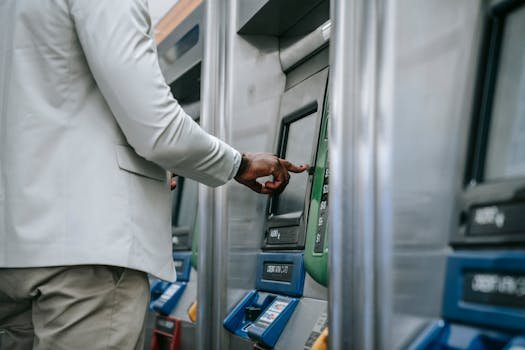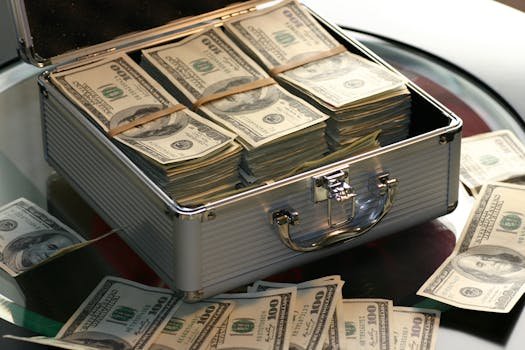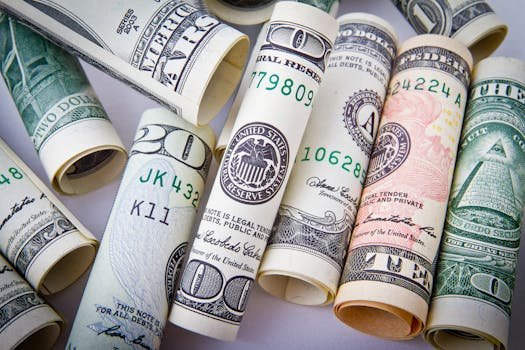Beating DCC, Surcharges & Weekend FX
Cash abroad isn’t just “cash.” Every withdrawal is a stack of hidden costs—ATM operator surcharges, your bank’s foreign transaction fee, the FX spread, sneaky weekend markups, and the worst offender of all: DCC (Dynamic Currency Conversion). This playbook shows you how the fees actually stack, which cards and networks help, how to spot and decline DCC on-screen, and what to do when limits, outages, or offline terminals get in your way.
Introduction: Why ATM withdrawals abroad are more expensive than you think
Pulling €200 from a foreign ATM looks simple—but behind that beep is a gauntlet of fee layers. Start with the ATM operator surcharge (a fixed local-currency fee set by the machine owner). Add your card issuer’s foreign ATM fee (flat or %). Then add the FX spread—the difference between the interbank rate and the rate used to convert your withdrawal into your card’s currency. If it’s a weekend, the app may slap on a weekend FX markup because markets are shut. And if you accidentally accept DCC, you’ll get a terrible “helpful” rate chosen by the ATM operator, not your bank.
A realistic $200 (or €200) example:
- ATM operator surcharge: €4.50 (displayed before you accept).
- Your bank’s out-of-network fee: $3.00.
- Foreign transaction fee: 3% ($6.00) if your card has one.
- FX spread / markup: ~0.4% (€0.80) if you let your provider convert at a fair rate; 3–7% if you accept DCC.
- Weekend markup: extra 0.5–1.0% on some fintechs.
Do it wrong and a €200 withdrawal can cost €12–€20+ in total frictions (6–10%). Do it right—with the right card, right machine, and correct on-screen choices—and you can cut that to €0–€5.
The anatomy of ATM fees
ATM operator surcharge (fixed fee)
This fee belongs to the ATM owner, not your bank. In many countries (e.g., parts of SE Asia and LatAm), surcharges are standard and often per withdrawal, not % of the amount. You’ll see a prompt like “This ATM charges 220.00 [Local CCY]. Continue?” You can cancel and try another bank’s machine nearby—fees vary widely within the same city.
Tactics:
- Prefer big-bank ATMs inside branches.
- If you find a low-fee ATM, withdraw more, less often (within safety limits).
- Avoid boutique kiosks and currency-exchange-branded ATMs; they often push DCC + high surcharges.
Your bank’s foreign transaction fee
Some issuers add 1–3% to all foreign transactions, including ATM withdrawals. Many travel cards are 0% FX on purchases, but still charge for foreign ATM use. This is separate from the operator surcharge.
Tactics:
- Carry at least one 0% foreign transaction fee card.
- Check if your issuer charges a separate foreign ATM fee (often $2–$5). Pick a card that reimburses or waives it.
FX spread markup
If your card converts currencies (e.g., card billed in USD, withdrawal in EUR), your issuer applies an FX rate. Good issuers and fintechs use near-mid-market with a small spread (~0.3–0.8%). Bad ones bury 1.5–3% in the rate. You won’t “see” it—the receipt only shows final numbers.
Tactics:
- Use providers that publish FX spreads and let you pre-convert at known rates.
- Withdraw in local currency and decline any “helpful conversion” offers (DCC).
Weekend/holiday FX fees
Some apps add 0.5–1.0% on weekends or holidays when markets are closed. That’s not evil; it’s risk-pricing. But you can avoid it.
Tactics:
- Pre-convert your spending cash on weekdays into a local-currency pot, then withdraw from that pot.
- If you need cash on Saturday, try a provider that doesn’t add weekend markups or pull from a pre-converted balance.
Dynamic Currency Conversion (DCC) trap
DCC offers to convert right now into your home currency (e.g., “Charge 218.37 USD instead of 200.00 EUR”). The shown rate is almost always worse—by 3–7%—than what your issuer would give. DCC profits the ATM operator; not you.
Rule: Always decline DCC and choose “Charge in local currency.”
Dynamic Currency Conversion (DCC) explained
How the “helpful” conversion offer works
ATMs (and point-of-sale terminals) detect your card’s home currency and offer to convert for you. They show a friendly box: “We can provide certainty! Exchange rate: 1 EUR = 1.1700 USD.” That rate is pre-loaded with a fat margin.
When you accept DCC:
- The ATM sets the FX rate.
- Your bank treats it as a domestic transaction in your home currency—no chance to beat that rate.
- You effectively tip the ATM operator for a “service” you didn’t need.
Why you should ALWAYS decline
If your card and provider are decent, your own bank/app’s rate is better than the ATM’s, even after your bank’s fees. DCC is the single biggest avoidable cost travelers pay at ATMs and POS.
How to spot DCC (screen examples)
Look for phrases like:
- “Convert to your card’s currency?”
- “We can guarantee today’s rate.”
- “Preferred exchange rate / We will charge in [USD/GBP/etc.].”
Choose: “Charge in local currency / Continue without conversion / Decline conversion.”
Tricky wording to watch for
- “We recommend charging in [home currency].”
- “Mastercard/Visa exchange rate may vary”—designed to scare you.
- Buttons are often reversed: “Accept conversion” (green) vs “Continue without conversion” (grey). Read carefully.
ATM network fees and alliances
In-network vs out-of-network
Many banks have alliances that waive ATM operator fees when using partner banks. Your card issuer may also reimburse ATM fees monthly. Check both: “in-network” saves you the operator surcharge, while issuer reimbursement refunds some or all fees after the fact.
Global ATM alliances (Global ATM Alliance, etc.)
Large alliances (e.g., Global ATM Alliance) include major banks in the US, UK, EU, Canada, Australia/NZ, etc. Members often waive usage fees at each other’s machines—but not always surcharges imposed by local owners, and membership can vary by account type. Always check your issuer’s current partner list before travel.
Fee-free ATM locators
Card networks and banks publish ATM finder maps. Before withdrawing, spend 60 seconds checking nearby bank-branch ATMs vs kiosks. It routinely saves €3–€6 per withdrawal.
Card strategies for minimal ATM fees
Cards with no foreign transaction fees
Carry at least one debit/credit card that charges 0% for foreign transactions. This saves ~3% on purchases and often improves ATM economics too.
Cards with ATM fee reimbursement
Some cards (most famously certain US checking accounts) reimburse ATM operator fees worldwide, posting credits at month end. This is powerful in surcharge-heavy countries—your net cost after credit can be near-zero.
Pro move: Pair a reimbursement card for ATM, and a separate rewards card for purchases.
High withdrawal limits to minimize trips
If the operator fee is fixed, fewer/larger withdrawals cost less overall. Raise your daily ATM limit with your bank before travel (and note the per-ATM cap).
Comparison: Schwab, Wise, Revolut, N26
| Feature | Schwab (US checking) | Wise | Revolut | N26 |
|---|---|---|---|---|
| Foreign transaction fees (card) | $0 on purchases | None on card spend from matching pot | Plan-dependent; purchases generally 0% | EUR purchases 0%; other FX plan-dependent |
| ATM reimbursements | Yes (plan/account dependent; check terms) | Monthly free allowance then fee; some ATM fees not reimbursed | Free allowance/month by plan; then fees | Free EUR ATM withdrawals up to allowance; outside EUR fees may apply (plan dependent) |
| FX approach | Network rate; bank spread policies apply | Transparent fee over mid-market; weekend markups may apply | Competitive weekday rates; weekend markup on some plans | Card network FX; fees vary by plan and region |
| Best for | Frequent ATM use; broad reimbursement | Transparent FX & multi-currency pots | Rich app/features; manage allowance | EU-centric travelers with simple needs |
Always check the latest fee schedules and your plan type/region; terms change.
Benchmark spreads first in Currency Exchange Fees.
Withdrawal limits and how to work around them
Daily limits (bank-imposed)
Your bank caps your daily withdrawal (e.g., $300–$1,000 by default). You can usually raise it temporarily via app or support. Request the change before a big-cash day.
Per-transaction limits (ATM-imposed)
Even if your bank allows $800/day, the ATM may cap a single withdrawal at, say, $200 equivalent. That means multiple swipes and multiple surcharges—unless you find a bank with higher per-transaction limits.
Multiple withdrawal strategy
If you must make multiple withdrawals:
- Use the same ATM in one session (some won’t double-charge the surcharge; others will).
- If surcharge repeats, walk to a bank branch ATM and try again.
Planning for large cash needs
For rent deposits, tours, or medical payments:
- Ask if bank transfer or card is accepted.
- If cash is unavoidable, pre-convert on a weekday and withdraw from the matching currency pot to dodge weekend FX.
- Line up a bank-branch withdrawal (inside, with teller) using your passport; fees can be lower than multiple surcharged ATM hits.
Weekend and holiday FX markup
How fintech apps add weekend spreads
FX markets shut on weekends. Some providers add 0.5–1.0% to cover rate risk. This applies to conversions done at withdrawal time.
Timing withdrawals strategically
- Thursday/Friday: Pre-convert an amount that covers weekend cash needs.
- Withdraw in local currency and do not accept DCC.
- If you must withdraw on Saturday, draw from a pre-converted pot so no live FX occurs.
Which providers don’t charge weekend fees
Traditional bank cards that let the network (Visa/Mastercard) set FX rates generally don’t add explicit “weekend” markups. But you can still get clipped by a hidden spread. The surest play is weekday pre-conversion with a transparent provider.
The offline PIN requirement
What is an offline PIN?
Some terminals—especially ATMs and unattended kiosks—authenticate your card offline using the chip. They need your chip PIN (not your mobile app PIN). If your card only supports online PIN or signature, the terminal may reject it.
Chip-and-PIN vs chip-and-signature
US credit cards historically used chip-and-signature; many have added PIN capability. Travel-friendly debit cards usually support chip-and-PIN out of the box.
Getting/setting your offline PIN before travel
- Ask your issuer to enable/reset your chip PIN (not just app login PIN).
- Test at a bank ATM before leaving.
- Memorize it, and don’t store online; if you forget, you may be locked out of unattended machines (train kiosks, tolls, rural ATMs).
Cash backup strategy
How much cash to carry
Carry a small emergency stash (e.g., $100–$300 + €100) apart from your wallet. Enough for a night, transport, and food if cards fail.
USD/EUR as universal backup currency
USD and EUR are widely accepted at exchanges and sometimes directly for deposits. Keep notes in good condition.
Where to store emergency cash safely
Split between a hidden pouch (under clothing or bag insert) and hotel safe. Rotate to avoid carrying stale funds across borders.
Money belts, hidden pouches, hotel safes
- Money belts deter pickpockets but aren’t magic; don’t access them in public.
- Hotel safes are decent for short stints, but add a luggage lock to your bag as a second barrier.
Country-specific ATM tips
EU/Eurozone
- Many banks don’t add operator surcharges, but some do—Spain/Portugal/CEE can show explicit fees.
- Decline DCC (you’ll see “Charge in EUR?” vs “Charge in USD/GBP?”).
- SEPA makes bank-to-bank transfers cheap; ask vendors if transfer is acceptable for larger payments.
SE Asia (Thailand, Vietnam ATM fees)
- Surcharges are common and fixed per withdrawal. It’s often cheaper to withdraw larger, less frequently (with safety in mind).
- DCC prompts are aggressive—always choose local currency.
- Try multiple bank ATMs in the same area; fees and per-transaction limits vary.
LatAm (Argentina, Brazil cash situations)
- Argentina: withdrawal caps and fees change frequently; many travelers rely more on card + transfers than ATMs.
- Brazil: use major bank ATMs inside branches/malls; watch for DCC prompts.
(Policies vary; always check current local advice.)
US and Canada
- Expect out-of-network fees from ATM owners ($2–$5). If your issuer reimburses, great; otherwise, look for your network’s in-network machines (store/branch ATMs).
- DCC usually not an issue domestically, but you may see it if using a foreign-issued card at certain terminals—still decline.
When ATMs fail: backup plans
Cash advance on credit card (last resort)
You’ll pay cash advance fees + high interest from day one. Use only if stranded and repay immediately. Know your cash advance PIN and limit.
Western Union, MoneyGram
Useful if cards fail completely. Fees can be high; consider as a bridge until your card/access is restored.
Bank branch over-the-counter withdrawal
Some banks allow teller withdrawals on your card with passport ID. Fees can be lower than multiple surcharged ATM hits, and limits are higher.
Safety and security at ATMs
Skimmers and how to spot them
- Check for loose card slots, weird overlays, pinhole cameras above PIN pad.
- Cover the keypad with your hand—shoulder surfing is still a thing.
- If anything looks off, walk away.
Safe ATM locations (banks vs street kiosks)
Use ATMs inside bank branches, hotels, or large malls. Avoid isolated street kiosks at night.
Time of day and visibility
Withdraw during business hours when branches are open and staffed. Stay aware when counting cash; deposit it quickly into a secure place.
Conclusion: Your ATM withdrawal checklist
Before you travel
- Carry at least two cards (different issuers/networks).
- Enable and test your chip-and-PIN.
- Confirm daily ATM limit; raise if needed.
- Know your card’s FX fees and ATM reimbursements.
- Set up a provider with transparent FX and pre-conversion.
At the ATM
- Prefer bank-branch ATMs; avoid currency-exchange kiosks.
- If surcharge shown is high, cancel and try another bank.
- Decline DCC; choose local currency every time.
- Withdraw larger, less often (within safety limits).
- Store cash safely; split stashes.
Weekends & holidays
- Pre-convert on Friday for weekend needs.
- Withdraw from pre-converted pot to avoid weekend markups.
If things go wrong
- Try a different bank ATM or branch teller.
- Use your reimbursement card if surcharges are unavoidable.
- As a last resort, cash advance and repay immediately.
Beat the games (DCC and hidden spreads), pick the right machine & card, and your cash costs shrink from ouch to meh—exactly what you want when every penny is for the journey, not the ATM.
Pick cards and allowances smartly with Wise vs Revolut vs N26; size your buffer via The Nomad Float.



